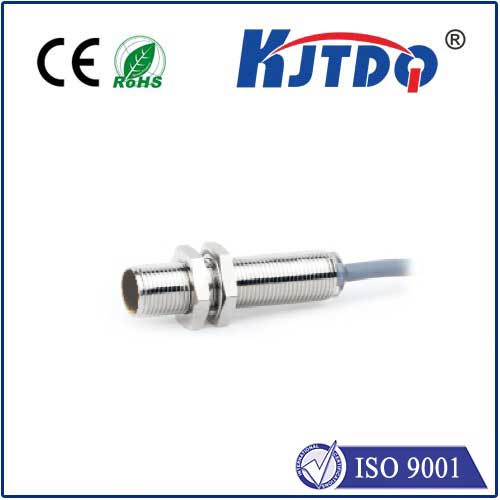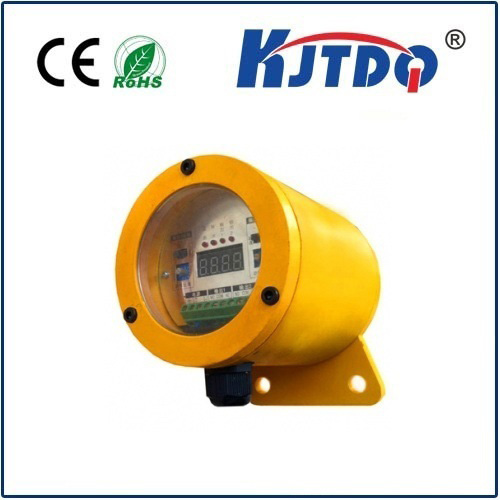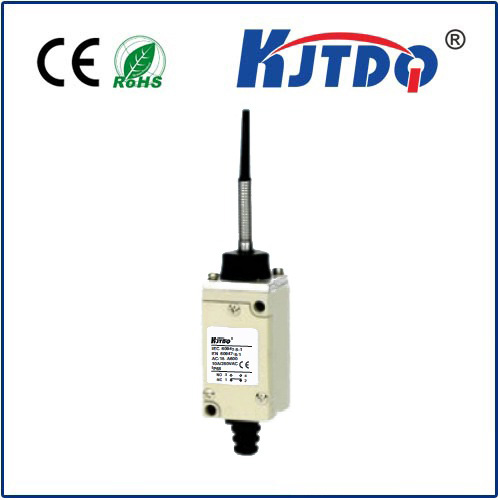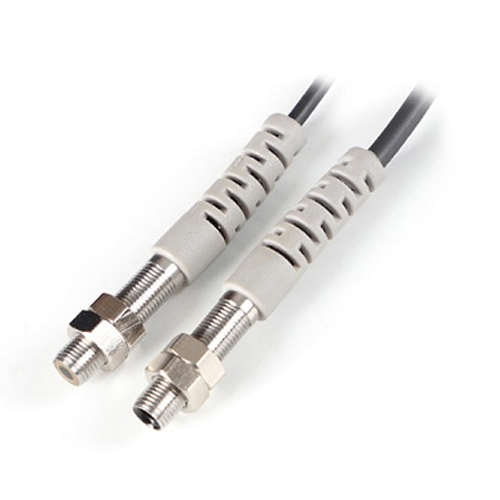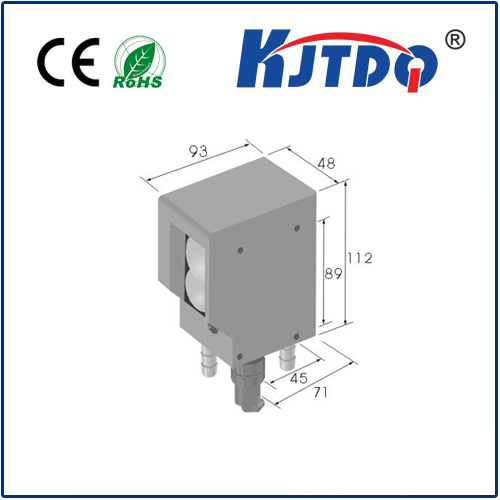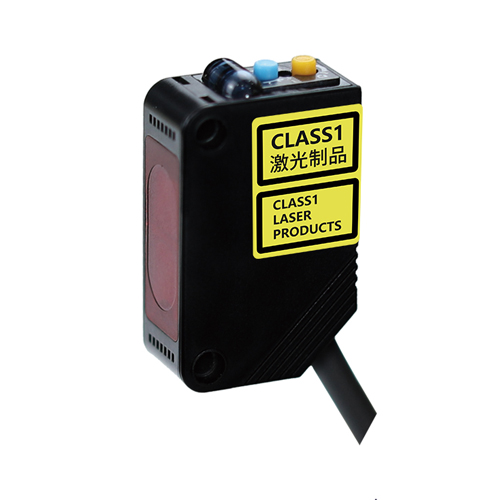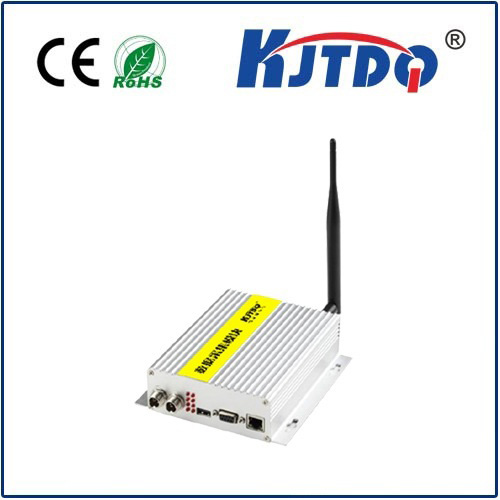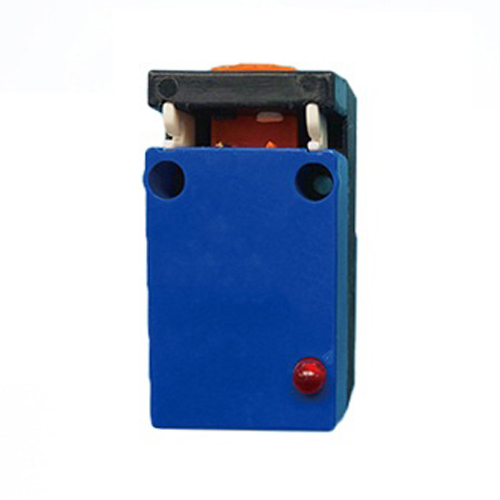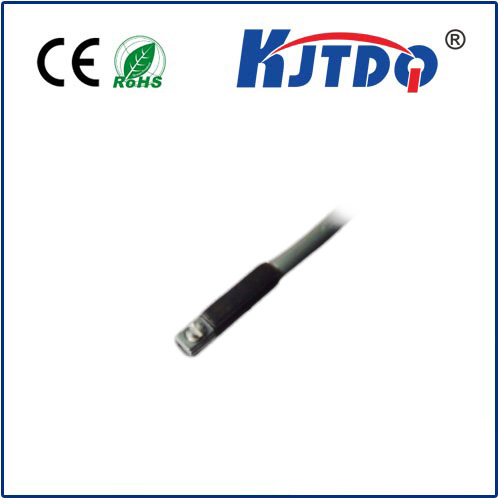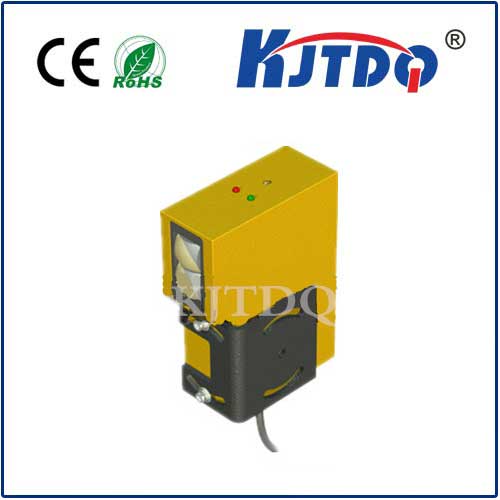thermopile laser sensor
- time:2025-09-08 17:03:59
- Click:0
Thermopile Laser Sensors: Where Infrared Sensing Meets Pinpoint Accuracy
Imagine needing to precisely measure the surface temperature of a tiny component on a fast-moving conveyor belt, or safely monitoring the heat signature of a specific point in complex machinery from a distance. Traditional methods might fall short. This is where the ingenious combination known as the thermopile laser sensor shines, merging the robustness of infrared temperature sensing with the precision of laser targeting to solve unique industrial and technical challenges.
At its core, a thermopile laser sensor integrates two fundamental technologies:
- The Thermopile: This is the sensing heart. It operates on the Seebeck effect, where a voltage is generated when there’s a temperature difference between junctions of dissimilar metals. A thermopile consists of multiple thermocouple pairs connected in series. Crucially, one set of junctions (the “hot junctions”) is exposed to absorb infrared (IR) radiation emitted by the target object. The other junctions (the “cold junctions”) are thermally connected to the sensor housing, acting as a reference temperature. The absorbed IR radiation heats the hot junctions, creating a temperature differential relative to the cold junctions. This temperature difference generates a proportional millivolt-level output signal, which is directly related to the amount of IR energy received and thus, the temperature of the target object. Thermopiles excel at contactless temperature measurement and respond to a broad spectrum of IR wavelengths.
- The Laser Diode: This is the guiding light. Typically a visible red laser (often Class 2), it is precisely aligned with the optical path of the thermopile’s sensor element. Its sole purpose is visual targeting. Unlike LiDAR or distance-measuring lasers, this laser does not actively measure distance or provide data for temperature calculation. Instead, it projects a highly visible spot onto the target surface, clearly indicating the exact center of the thermopile’s measurement spot or field of view (FOV).
The Power of the Pairing: Solving Real-World Measurement Problems
So, why combine these technologies? The synergy delivers tangible benefits where either technology alone would be insufficient:

- Precise Targeting in Complex Environments: In settings filled with multiple heat sources, moving parts, or hard-to-access locations, accurately pointing a non-contact IR sensor at the exact spot you want to measure is critical. The laser provides instant, unambiguous visual confirmation of where the sensor is pointed. This eliminates guesswork and ensures you’re measuring the intended object or location, not a background hotspot or adjacent component.
- Overcoming Field-of-View Challenges: Thermopiles have a defined FOV, often expressed as a distance-to-spot size ratio (e.g., 12:1). This means from 12 inches away, the sensor might measure an area 1 inch in diameter. At greater distances, the spot size increases significantly. The laser allows the operator to visually define the measurement area’s boundaries from the installation point. The user can see if the laser spot (and thus the measurement spot) is entirely on the target object and adjust positioning accordingly, ensuring valid readings.
- Safe and Efficient Installation & Calibration: Aligning sensors, especially in tight spaces or on complex machinery, is safer and dramatically faster with a visual guide. Technicians don’t need to be right next to the measurement point during alignment. Simply point the laser onto the target, secure the sensor, and verify the spot remains on target during operation.
- Dynamic Measurement Verification: For applications involving moving objects or processes, the laser allows users to visually confirm that the sensor is tracking the correct target throughout the cycle.
Where Thermopile Laser Sensors Excel: Key Applications
The unique value proposition of these sensors makes them indispensable in numerous fields:
- Industrial Automation & Process Control: Monitoring specific points on PCBs during soldering/reflow, checking bearing temperatures on motors or gearboxes, controlling surface temperatures in plastic extrusion or heating processes, verifying weld temperatures.
- HVAC & Building Automation: Accurately targeting duct temperatures, monitoring specific coils within air handling units, or measuring surface temperatures on pipes or valves from a distance.
- Scientific Research & Laboratory Use: Targeting specific samples within complex experimental setups, measuring thermal characteristics of small components under test.
- Preventive Maintenance: Quickly and safely scanning electrical panels for hot spots on specific breakers or connections, checking motor windings.
- Medical Equipment: Non-contact temperature monitoring devices where precise targeting is needed.
Understanding Limitations is Key
While powerful, thermopile laser sensors are not a universal temperature solution:
- No Distance Compensation: The laser is only for targeting. The thermopile’s output depends on the IR energy received. Objects farther away appear cooler because the sensor captures less IR radiation from the same spot size. Accurate temperature measurement requires the sensor to be programmed with the correct emissivity and distance to the target.
- Emissivity Dependency: Like all IR sensors, they rely on knowing the target’s emissivity (its efficiency at emitting IR). Shiny or reflective surfaces (low emissivity) give inaccurate readings unless treated or compensated for.
- Atmospheric Interference: Water vapor, dust, and certain gases can absorb IR radiation, affecting readings over longer distances.
- Spot Size Limitation: They still measure the average temperature within their optical FOV spot. Measuring very small objects requires sensors with a large distance-to-spot ratio or close positioning.
Choosing the Right Sensor: Key Considerations
Selecting the optimal thermopile laser sensor involves evaluating:
- Temperature Range: What min/max temperatures do you need to measure?
- Optical Resolution (Distance-to-Spot Ratio): What spot size is acceptable at your working distance? A 50:1 ratio offers a much smaller spot at distance than a 10:1.
- Spectral Response: Most thermopiles are broadband (e.g., 8-14 µm), suitable for general use. Some are filtered for specific gases or materials.
- Response Time: How quickly must the sensor react to temperature changes?
- Laser Type & Safety: Ensure the laser class is safe (Class 2 is common) and suitable for the environment.
- Output Signal & Interface: Analog (mV, 4-20mA, 0-10V) or digital (RS485, Modbus), depending on your control system.
- Environmental Rating (IP): Protection against dust and moisture required?
The Unmatched Advantage of Precision Targeting
The thermopile laser sensor represents a practical solution born from real-world needs. By marrying the contactless, robust temperature sensing capabilities of a thermopile with the pinpoint visual targeting of a laser, it solves critical problems in industrial measurement and control. It bridges the gap between merely detecting heat and knowing exactly where that heat is coming from. Whether ensuring product quality on a production line, preventing costly equipment failures through predictive maintenance, or enabling precise laboratory research, this technology empowers users to measure with greater confidence and accuracy, one laser-guided IR spot at a time. Understanding its principles, capabilities, and limitations is essential for unlocking its full potential in demanding applications.






